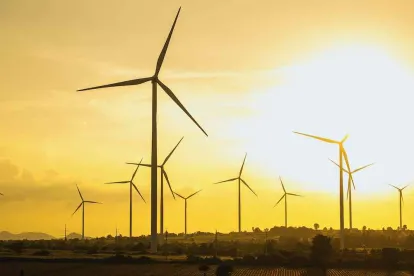After years of extensive regulatory review and public comment, Vineyard Wind LLC (Vineyard Wind) is now on the precipice of entering the operations term of (and beginning construction under) its offshore commercial-scale wind lease. Through the competitive leasing process, the Department of the Interior’s Bureau of Ocean Energy Management (BOEM) issued Vineyard Wind a commercial wind lease (Lease OCS-A0501) in March 2015. Extensive analysis — both by a wind lessee and by BOEM (and collaborating agencies) — is required after BOEM’s issuance of a wind lease and before operations under that lease can actually begin. Thus, in December 2017, Vineyard Wind submitted its Construction and Operations Plan (COP) for BOEM’s approval; the COP presents Vineyard Wind’s detailed plans for constructing and operating the first commercial-scale wind energy project in the United States. Vineyard Wind’s submission of the COP triggered BOEM’s obligation to conduct an extensive environmental review of the proposed project (and various alternatives thereto) under the National Environmental Policy Act (NEPA).
On Monday, BOEM released its long-awaited Final Environmental Impact Statement (the Vineyard Wind FEIS), signaling that BOEM will likely permit Vineyard Wind to move forward with its proposal (subject to certain modifications). Vineyard Wind 1 Offshore Wind Energy Project, Final Environmental Impact Statement, 1-1 (March 2021), available at https://www.boem.gov/vineyard-wind. BOEM’s release of the Vineyard Wind FEIS is the culmination of BOEM’s multiyear environmental review process under NEPA, which involved BOEM’s publication of a draft Environmental Impact Statement in December 2018, BOEM’s publication of a supplemental draft Environmental Impact Statement in June 2020, public meetings addressing Vineyard Wind’s original proposal and various modifications thereto, and solicitation and evaluation of public comments regarding Vineyard Wind’s proposal and BOEM’s draft environmental analyses. Given that the Vineyard Wind proposal is the first occasion for BOEM to consider the potential impacts of a commercial-scale offshore wind farm (both environmental and otherwise), BOEM also delayed its decision-making regarding Vineyard Wind’s proposal in order to consider the potential cumulative effects of the offshore wind industry. See Government Accountability Office, GAO-21-153, Offshore Wind Energy, p. 7 (December 2020) [hereinafter “GAO-21-153”] (explaining: “BOEM … deferred its plans” to make a final decision on the Vineyard Wind proposal “to allow for additional analysis,” including a consideration of “the cumulative effects of offshore wind on issues such as fishing and travel lanes for vessels through offshore wind areas”). BOEM’s release of the Vineyard Wind FEIS is significant not only for the Vineyard Wind lease but also for the offshore wind industry as a whole, as it establishes the first precedent for BOEM’s favorable environmental review of a commercial-scale offshore wind project.
The Vineyard Wind FEIS evaluates potential impacts (environmental, socioeconomic, etc.) of the proposal set forth in Vineyard Wind’s COP, which proposal contemplates the construction, operation, maintenance, and eventual decommissioning of an 800-megawatt wind farm offshore Massachusetts. The proposed project contemplates several offshore structures, including up to 100 wind turbine generators (WTGs) “and their foundations, [electrical service platforms] and their foundations, scour protection for all foundations, inter-array cables that connect the [turbines] to the [electrical service platforms], the inter-link cables that connect the [electrical service platforms], and the export cables to the landfall location.” Vineyard Wind FEIS, p. 2-6. The proposed project also involves several onshore facilities, including “the landfall site, the onshore export cables from the landfall site to the onshore substation, the onshore substation, and the connection from the proposed substation site to the existing bulk power grid.” Id. at 2-4.
As required under NEPA, the Vineyard Wind FEIS also addresses BOEM’s consideration of the potential impacts of several alternatives or modifications to Vineyard Wind’s proposal, including for example restricting the maximum number of WTGs (e.g., limiting the maximum number of WTGs to 84), imposing parameters for spacing of the WTGs (e.g., requiring a minimum of 1 nautical mile between the WTGs), requiring that the WTGs be installed with a particular orientation, and disapproving of the proposed action entirely (the “No Action Alternative”). See Vineyard Wind FEIS, pp. 2-16–2-25.
Significantly, the Vineyard Wind FEIS also includes a description of BOEM’s “preferred alternative,” which “let[s] the public know which alternative BOEM, as the lead agency, is leaning toward before an alternative is selected for action” when a Record of Decision is issued. Vineyard Wind FEIS, p. 2-27. BOEM’s “preferred alternative” involves a combination of several of the alternatives considered and entails:
-
“The construction, operations, maintenance, and eventual decommissioning of an 800 [megawatt] large-scale commercial wind farm” located offshore Massachusetts;
-
A maximum of 84 WTGs;
-
Installation of the WTGs “in a north-south and east-west orientation with a minimum spacing of 1 nautical mile between them”;
-
Landfall of the export cables at Covell’s Beach; and
-
Various “mitigation and monitoring measures to avoid or reduce impacts on existing ocean uses and environmental and socioeconomic resources[.]” Id.
BOEM’s forthcoming publication of the Vineyard Wind FEIS in the Federal Register (expected later this week) will trigger a 30-day waiting period before BOEM can issue a final Record of Decision allowing the Vineyard Wind project to proceed. BOEM’s publication of the Vineyard Wind FEIS not only signals that BOEM will likely approve Vineyard Wind’s construction and operation of the first offshore commercial-scale wind project in the United States, but also provides valuable insight into how BOEM will analyze other proposals for offshore wind energy projects going forward, including BOEM’s analysis of several other commercial-scale wind projects that are currently pending approval at various stages. See GAO-21-153, Table 1 (identifying several other wind leases and proposed wind projects). Thus, while BOEM’s release of the Vineyard Wind FEIS is not a final approval, it is a significant step forward for the Vineyard Wind project, and it is likely to spark activity and additional capital investment in the offshore wind industry in the United States.
For background information regarding the regulatory framework that applies to offshore wind leases and Vineyard Wind’s offshore wind lease, please see the following article: Sarah Y. Dicharry, Navigating BOEM’s Regulatory Framework for Commercial Wind Leases.



 />i
/>i

